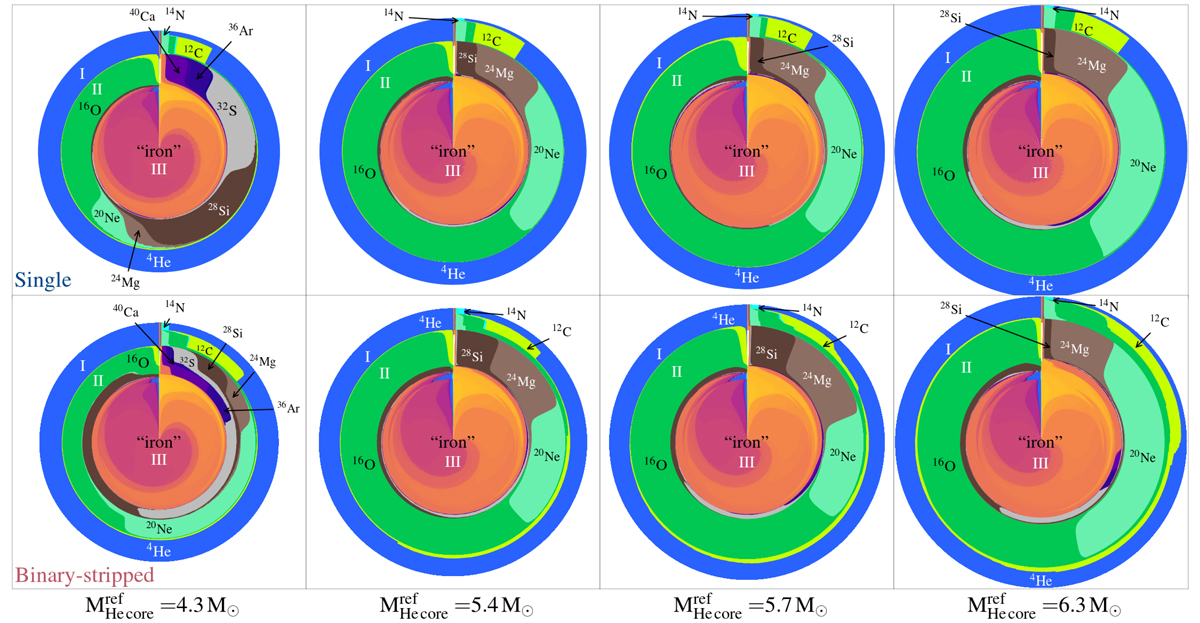Fig. 2.

Download original image
Final composition profiles of selected single (top row) and binary-stripped (bottom row) star models at the onset of core collapse. We show four example models with similar reference core masses, which are indicated below each column. The diagrams are constructed in a similar fashion as Fig. 1, with each color representing an isotope and the surface area spanned by this color being proportional to the mass of this isotope in the star. The radius of each diagram is proportional to the final helium core mass. The hydrogen-rich envelope of single stellar models is not shown. Three prominent regions are marked with roman numerals: (I) a helium-rich layer, (II) an oxygen-rich layer, and (III) an inner iron-rich zone. The lowest-mass example models (leftmost column) both show enhanced mass fractions of heavy elements in the oxygen-rich region (II) due to shell merger events. Binary-stripped star models contain an extended carbon-oxygen gradient at the edge of the oxygen-rich region (II) that is absent in single-star models.
Current usage metrics show cumulative count of Article Views (full-text article views including HTML views, PDF and ePub downloads, according to the available data) and Abstracts Views on Vision4Press platform.
Data correspond to usage on the plateform after 2015. The current usage metrics is available 48-96 hours after online publication and is updated daily on week days.
Initial download of the metrics may take a while.


